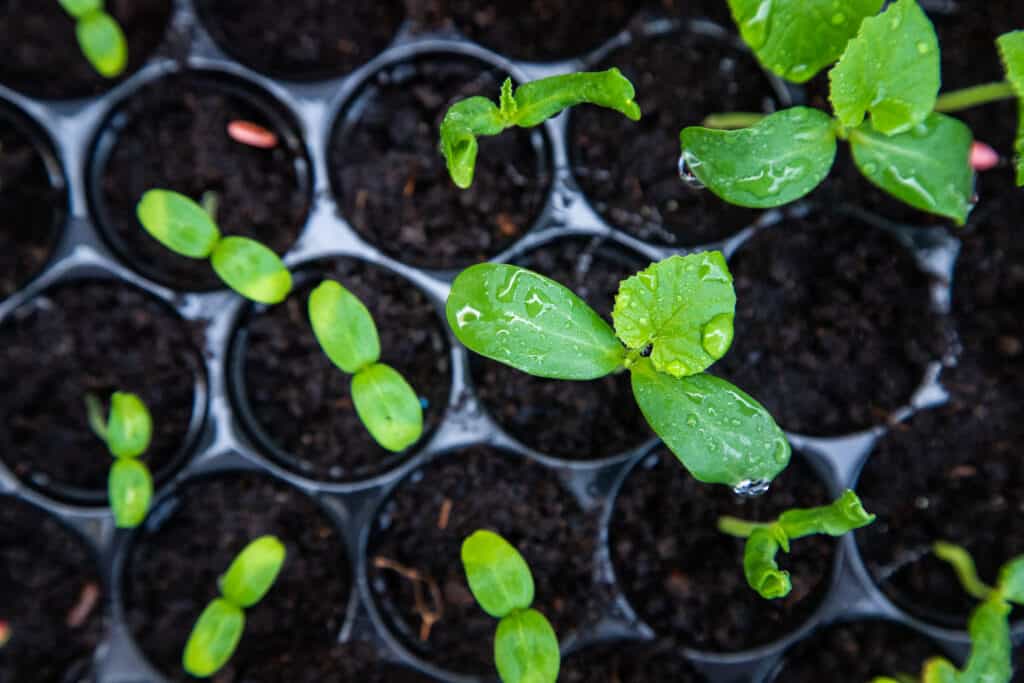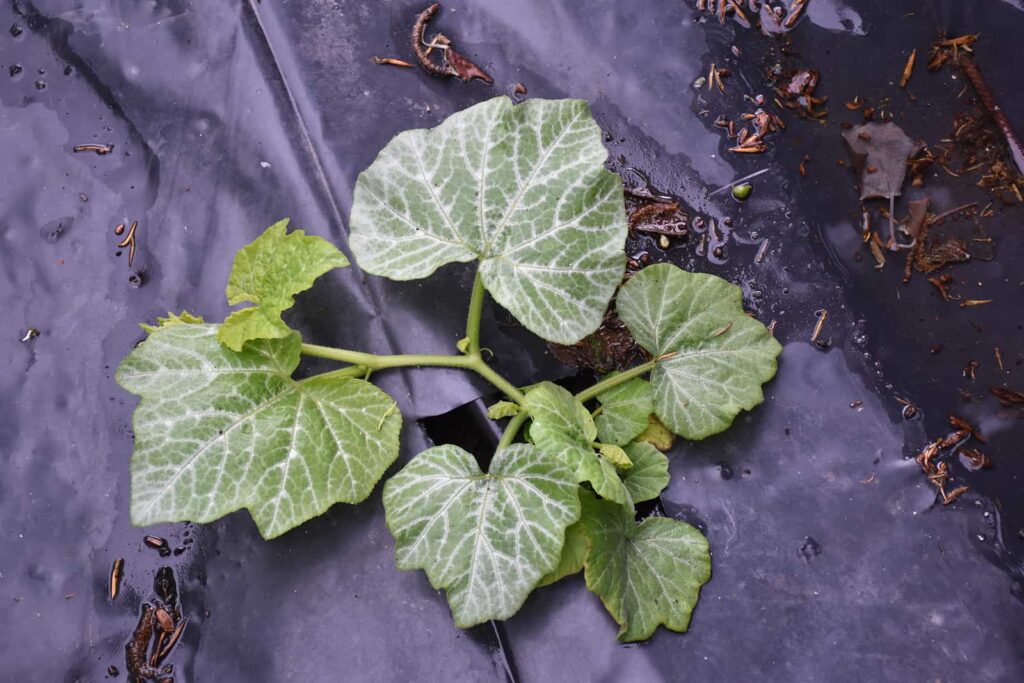Melons are a tender, warm-weather crop. Plant melon seeds directly in the garden 2 weeks after the last frost date. Melon seeds can be started indoors 3 to 4 weeks before plants are transplanted directly into the garden, sooner if transplants will be protected by a plastic tunnel or row cover.
Melons include cantaloupes and muskmelons which are called “summer melons” because they are the first melons to reach harvest, and casaba, Charentai, Crenshaw, honeydew, and Persian melons which are called “winter melons” because they come to harvest late.
- Summer melons are usually ready for harvest about 3 months after sowing at the end of summer.
- Winter melons, though planted at the same time as summer melons, take an additional month to reach harvest.
- Summer melons mature 70 to 120 frost-free days after sowing.
- Winter melons mature 110 to 140 frost-free days after sowing.
Plant late and early varieties at the same time to provide a succession harvest of melons over a month-long period.
Grow melons in light, fertile, sandy, or loamy soil rich in organic matter. Avoid heavy, poorly draining soils.
Save space by training vining varies up a fence or other support. Tie branches with a soft cloth and support melons with slings.

Melon sowing and planting tips
- Grow melons from seeds or seedlings.
- Seed is viable for 5 years.
- Direct sow melons in the garden in spring after all danger of frost has passed and the soil has warmed to 70°F (21°C). In warm-winter regions, sow melons in midwinter for harvest in early summer.
- Melon seeds will not germinate at a soil temperature below 65°F (18°C).
- Start melons indoors 3 to 4 weeks before planting out into the garden; sow seed in peat pots in seed starting mix. The indoor temperature should be between 80° to 90°F (27-32°C) until germination. Grow melon seedlings at 75°F (24°C).
- Sow seed ½ to1½ inches (13-38 mm) deep.
- Seeds germinate in 4 to 10 days at 80°F (27°C) or warmer.
- Transplant melons into the garden after the soil has warmed to at least 70°F (21°C) for optimal performance.
- Space plants in the garden 24 to 36 inches (60-90 cm) apart in all directions.
- Plant melons on mounds or hills 12 to 24 inches (30-60 cm) high, space mounds 4 to 6 feet (1.2-1.8 m) apart; this will allow melon vines to run down the mounds allowing the fruit to gain maximum exposure to the sun.
- Keep the soil just moist during fruit development.
- Fertilize with fish emulsion or a soluble complete fertilizer at half strength.
- Add aged compost to planting beds in advance of transplanting.
- Melons prefer a soil pH range of 7.0 to 8.0.
- Grow melons in full sun for the best yield and flavor.
- Avoid planting melons where cucumbers or squash have grown recently.
- Common pest enemies include aphids, cucumber beetles, flea beetles, squash bugs, squash vine borers, slugs, and snails.
- Common diseases include bacterial wilt, fusarium wilt, downy mildew, powdery mildew, and cucumber mosaic.
Interplanting: Plant melons with bush beans, corn, dill, eggplant, lettuce, cucumbers, squash, and tomatoes.
Container Growing Melons: Melons are not a good choice for container growing. They require significant room to spread and grow.
Melon planting calendar
- 6-8 weeks before the last frost in spring: start seed indoors for plants that will be transplanted into a plastic tunnel in 4 weeks.
- 4-5 weeks before the last frost in spring: start seed indoors for seedlings to be transplanted into the garden.
- 2-4 weeks before the last frost in spring: transplant seedlings to a plastic tunnel.
- 1-2 weeks after the last frost in spring: direct sow or transplant seedlings into the garden; minimum soil temperature is 60°F.

Melon suggested planting dates
| Average date of the last frost | Planting dates |
| Jan. 30 | Feb. 15-Mar. 15 |
| Feb. 8 | Feb. 15-Apr. 1 |
| Feb. 18 | Feb. 15-Apr. 15 |
| Feb. 28 | Mar. 1-Apr. 15 |
| Mar. 10 | Mar. 15-Apr. 15 |
| Mar. 20 | Apr. 1-May 1 |
| Mar. 30 | Apr. 10-May 15 |
| Apr. 10 | Apr. 20-June 1 |
| Apr. 20 | May 1-June 15 |
| Apr. 30 | May 15-June 15 |
| May 10 | June 1-15 |
| May 20 | |
| May 30 | |
| June 10 |

Types of melons
Summer melons include true cantaloupes and muskmelons. These come to harvest in about 3 months toward the end of summer.
Winter melons include casaba, Charentai, Crenshaw, honeydew, and Persian which takes 3 to 4 months to reach harvest. These are usually ready until late autumn or early winter.
Recommended melon varieties
Choose from these melon types and varieties:
- True Cantaloupe: ‘Charentais’ is small; ‘Savor’ is sweet with orange flesh.
- Muskmelon: ‘Ambrosia’ is sweet and juicy; ‘Sweet ‘n Early’ is a good choice in short-season regions.
- Crenshaw: ‘Burpee’s Early Hybrid’ is pink-fleshed; ‘Morning Dew’.
- Honeydew: ‘Honey Pearl’
- Casaba: ‘Casaba Golden Beauty’ is spicy-sweet.
Botanical Name: Cucumis melo var. cantaloupesis includes netted muskmelons and true cantaloupes; Cucumis melo var. inodorus includes honeydews, casaba melons, and Crenshaw melons.
Melons are a member of the Cucurbitaceae family; other members are cucumbers, squash, watermelon, and pumpkins.
More tips: How to Grow Summer Melons–Cantaloupe and How to Grow Winter Melons.
More melon growing articles:
Melon articles at Harvest to Table:
How to Plant and Grow Watermelon
How to Harvest and Store Melons
How to Harvest and Store Watermelon
Melons Growing Problems Troubleshooting
Serve Watermelon With These Flavor Matches
Garden Planning Books at Amazon:
- Tomato Grower’s Answer Book
- Vegetable Garden Almanac & Planner
- Kitchen Garden Grower’s Guide Vegetable Encyclopedia
- Vegetable Garden Grower’s Guide



